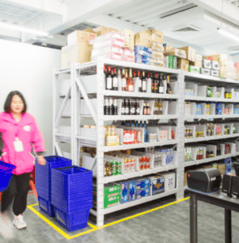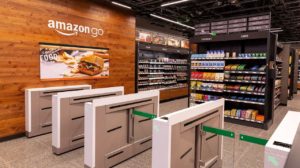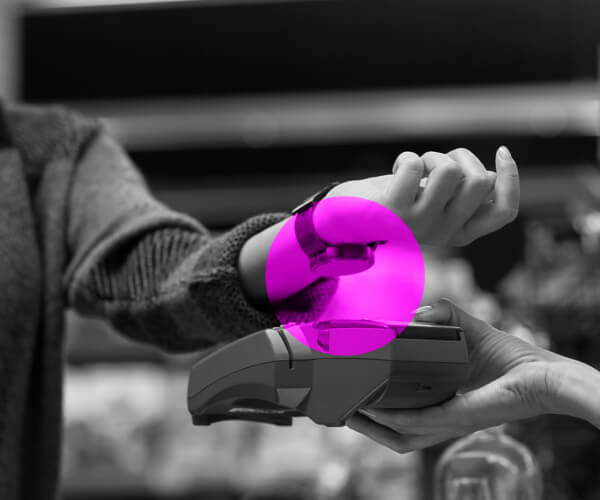3 Trends to Help You Achieve the Most Valuable Moment in Marketing: When a Transaction Occurs
The shopping landscape in Asia has dramatically changed, and shopper behavior has too. Retailers and brands are racing to capture the hearts of shoppers with expectations that are constantly evolving. Consumers now want more personalized customer experiences, transparent supply chains, and more agile operations. They are using more technology and fulfillment options including self-check-out, curb pick-up, scan & buy, local delivery, and contactless payments. Furthermore, the Asia shopper is now focused on sustainability. Therefore, retailers and brands need to shift and change how they engage with shoppers.
These changes are rapidly shaping the retail landscape in Asia and can be expected to soon have an impact in other regions, especially the West. Understanding these trends and anticipating the impact of similar changes in Europe and the Americas would be a prudent way for shopper marketers to prepare for the ever-evolving retail landscape.
With offices across Asia, Europe, and the Americas, coupled with a deep understanding of human behavior, we at Behaviorally are committed to helping our clients stay ahead of the changing landscape. Here is a guide on the three most important trends coming from Asia we believe you should be thinking about.
The Evolving Shopper
The younger generations of shoppers are more purpose driven now, not focused on just value or brand names as compared to previous generations. Research now shows that 62% of consumers are willing to change their purchasing habits to help reduce environmental impact – a leap from 57% just two years ago. More strikingly, 50% of respondents said they’re willing to pay a premium for a more sustainable product (around an average 70%), which is double from 2020. Therefore, now brands and retailers must evolve to capture this new segment of shoppers.
 A prime example of how an e-tailer is succeeding in Asia is Alipay’s Ant Forest (pictured right) with their use of gamification. For each eco-friendly purchase, consumers earn energy points which are converted into trees planted in China’s driest areas. Another prime example is luxury brand, Burberry, who partnered with Tencent to create an exclusive collection made with ECONYL® fabric, which is a sustainable nylon yarn made from regenerated fishing nets, fabric scraps, and industrial plastic. Burberry and Tencent created an interactive 10 room in-store that provided storytelling and used WeChat to unlock each room, share the sustainability story, and earn social currency and rewards for the shoppers.
A prime example of how an e-tailer is succeeding in Asia is Alipay’s Ant Forest (pictured right) with their use of gamification. For each eco-friendly purchase, consumers earn energy points which are converted into trees planted in China’s driest areas. Another prime example is luxury brand, Burberry, who partnered with Tencent to create an exclusive collection made with ECONYL® fabric, which is a sustainable nylon yarn made from regenerated fishing nets, fabric scraps, and industrial plastic. Burberry and Tencent created an interactive 10 room in-store that provided storytelling and used WeChat to unlock each room, share the sustainability story, and earn social currency and rewards for the shoppers.
Another interesting trend in Asia is the adaptations retailers are making towards the elderly and towards those consumers with disabilities. Taobao and Ele.me e-tailers both created “senior mode” options on their sites that feature larger text, bigger icons, simplified navigation, voice-assistance technology, and more to help this underserved segment. Following Taobao’s lead, streaming platform Youku now has a voiceover screen reader for the visually impaired. Additionally, Alibaba also has established a committee dedicated to special-needs shopper segments to ensure that all consumers can enjoy the benefits of digitization.
Shopper marketers in Europe and the Americas could take a leaf from the Asian playbook on addressing the needs of the evolving shopper. Clearly Millennials and Gen Z’s the world over are concerned about the impact on the environment. While this is not new, what is new is the way some brands are showcasing their shared concern using strategies like gamification and virtual worlds and directly addressing their target consumer. Similarly, while it makes perfect sense to expand the user pie by offering access to the elderly – a growing demographic in Asia and in other regions – doing so with empathy to the needs of the segment is something worth noting.
The Evolving Store
As shoppers evolve in Asia, so do the retail shops. The purpose-driven shoppers want more transparency from their products. Now brick-and-mortar shops include QR code labels shoppers scan to track the product’s origin, read reviews, get recipe tips, and more. Also, there are now digital assistants ready to chat and help answer questions. Stores like Hema Super, if a shopper purchases fresh food items, they can opt to choose to deliver the groceries to their home, have the retailer’s chefs cook it so the shoppers can eat it in-store, or have the store cook and deliver the meal to their home. The opportunities are endless.
To further capitalize on faster delivery, physical retail stores are partnering with food companies like UberEats and Deliveroo to quickly deliver groceries, making online impulse purchases possible. E-tailers like Tmall are also helping offer wholesale support to neighborhood stores by tracking their inventory and becoming the new supply chain.
Now the social media platforms are beginning to merge with stores as well becoming a new platform for consumers to shop from. Facebook shop has over 1 million shoppers. There is also Pinterest TV, TikTok Shop SEA, Snapchat joined forces with eBay, Pinterest + The Yes, Twitter with Shopify, and YouTube with Shopify. All these platforms allow consumers to stay within the platform without ever leaving those sites or apps, keeping them wholly engaged.
 It is not just social media platforms but e-tailers are also becoming a one stop shop for consumers. Tmall has a “Discover” button on their site and once pressed, consumers can find short videos, livestreaming, mini games to play, and communities to converse with other shoppers. In addition, e-tailers like MissFresh have created a DMW (Distributed Mini Warehouses) model where mini distribution centers allow e-tailers to easily deliver within 30 minutes if ordered within a 3km radius (pictured right). To further dominate the retail space, e-commerce sites are now using drones or autonomous vehicles to make deliveries especially those to areas such as China’s countryside where terrain and mountains act as barriers to fulfillment.
It is not just social media platforms but e-tailers are also becoming a one stop shop for consumers. Tmall has a “Discover” button on their site and once pressed, consumers can find short videos, livestreaming, mini games to play, and communities to converse with other shoppers. In addition, e-tailers like MissFresh have created a DMW (Distributed Mini Warehouses) model where mini distribution centers allow e-tailers to easily deliver within 30 minutes if ordered within a 3km radius (pictured right). To further dominate the retail space, e-commerce sites are now using drones or autonomous vehicles to make deliveries especially those to areas such as China’s countryside where terrain and mountains act as barriers to fulfillment.
 And how do you bring an experience to shoppers who cannot visit the physical space? The Louvre Museum in Paris decided to bring the museum going experience to virtual museum visitors in China affected by the zero COVID travel ban. By joining forces with Alibaba, the Louvre provided a flavor of the museum experience while offering French brands to the visitors via the Alibaba platform. Pop-up shops on the Bund in Shanghai allowed shoppers to peruse items as they would at the Louvre Museum and purchase using QR codes linked to their Tmall app. Additionally, Louvre used Youku to livestream a tour on Fliggy.
And how do you bring an experience to shoppers who cannot visit the physical space? The Louvre Museum in Paris decided to bring the museum going experience to virtual museum visitors in China affected by the zero COVID travel ban. By joining forces with Alibaba, the Louvre provided a flavor of the museum experience while offering French brands to the visitors via the Alibaba platform. Pop-up shops on the Bund in Shanghai allowed shoppers to peruse items as they would at the Louvre Museum and purchase using QR codes linked to their Tmall app. Additionally, Louvre used Youku to livestream a tour on Fliggy.
The dynamism of the shopping ecosystem is very exciting and the blending of media and retailer categories is a trend we can certainly expect to continue around the world especially with the rise in technological advancements.
The Evolving Technology
Artificial intelligence and big data are empowering retailers and brands to further develop. TWTA (Tmall Worldwide Trend & Style Alliance) uses AI to examine product photos on its platforms and fashion shows to identify patterns to forecast trends. In addition, Tmall leverages that same algorithm to create more engaging shopping experiences like adding specific color and style trends to the search option. E-tailers like Tmall and JD are using big data to decide which stores to add to their brick-and-mortar malls based on what is popular in those areas. In addition, stores are including interactive experiences including recording your own livestream in-store.
 Though this analysis examines the Asia shopper and retail landscape, many of these trends may sound familiar to those in other regions. An example in the US is Amazon, an e-tailer, has now opened physical grocery stores, which is similar to what Alibaba’s Fresh Hippo and JD’s Fresh did. Another prime example is Kroger partnering with Microsoft to develop a digitally powered shopping experience to make it more convenient to shoppers and already have two pilot stores open in the US. What we may see in one region may very well impact other regions.
Though this analysis examines the Asia shopper and retail landscape, many of these trends may sound familiar to those in other regions. An example in the US is Amazon, an e-tailer, has now opened physical grocery stores, which is similar to what Alibaba’s Fresh Hippo and JD’s Fresh did. Another prime example is Kroger partnering with Microsoft to develop a digitally powered shopping experience to make it more convenient to shoppers and already have two pilot stores open in the US. What we may see in one region may very well impact other regions.
Our Behaviorally Asia team has been tracking the evolving consumer trends and will continue to do so. With hubs throughout the region including Singapore, Shanghai, Bangkok, Melbourne, Sydney, Manila, Hanoi, and Dubai, we are here to help support you to understand the Asia shopper. We also have a full network of experts throughout the Europe and North American regions. Contact your local team today to own the most valuable moment in marketing: the sales transaction.
